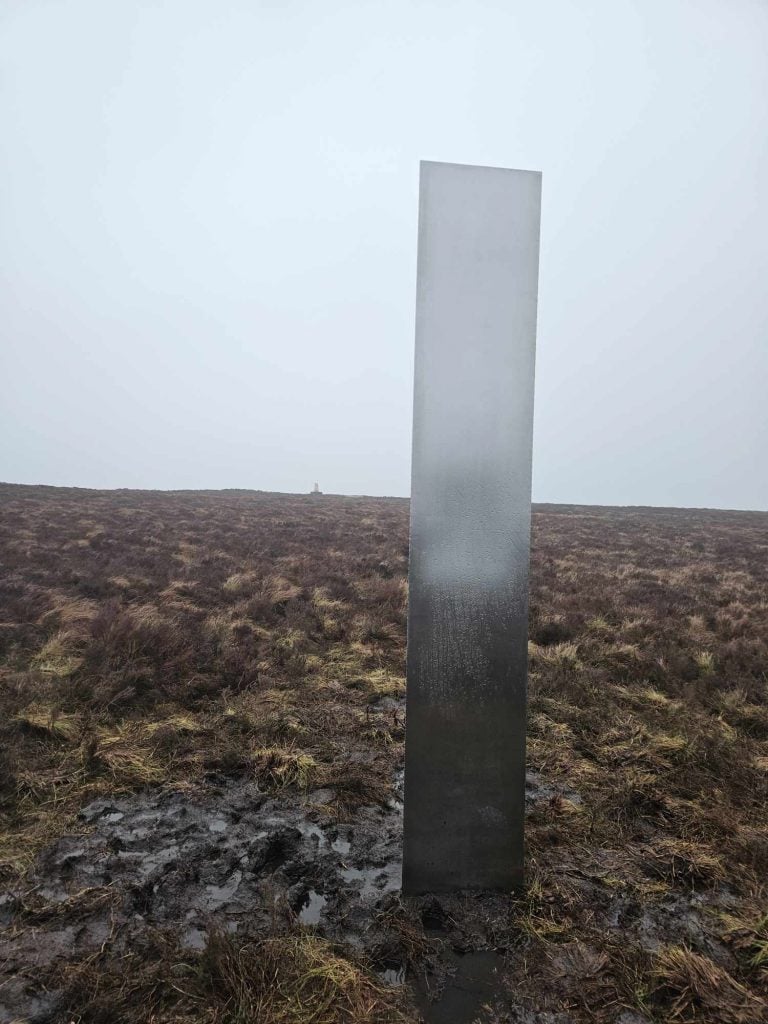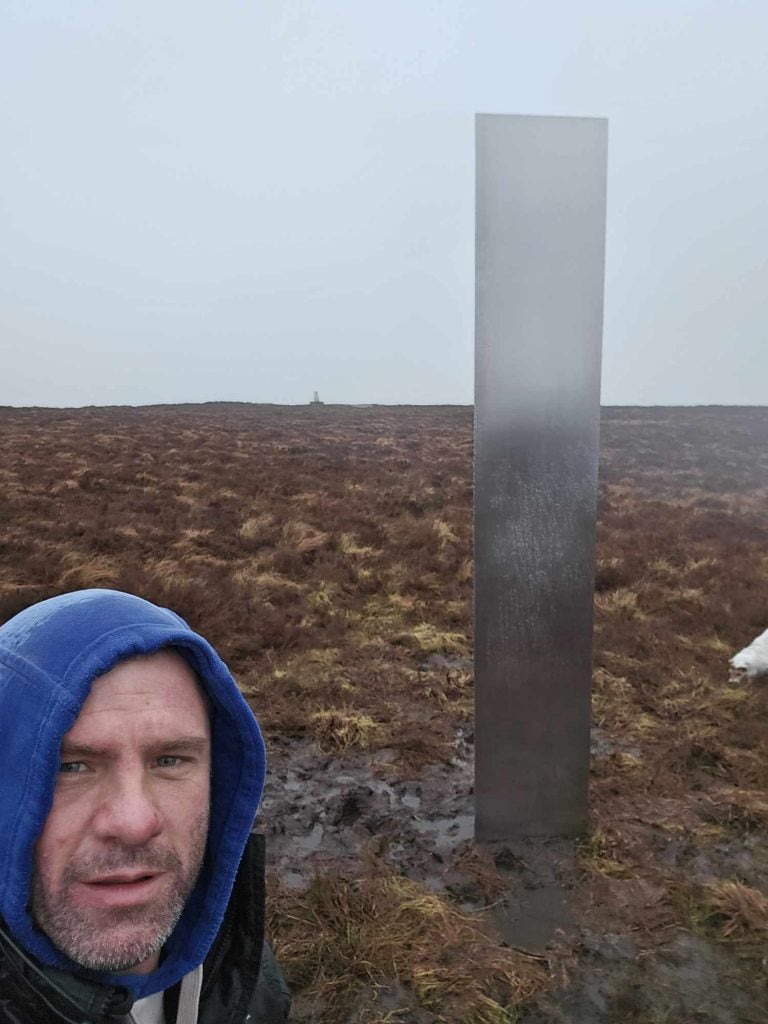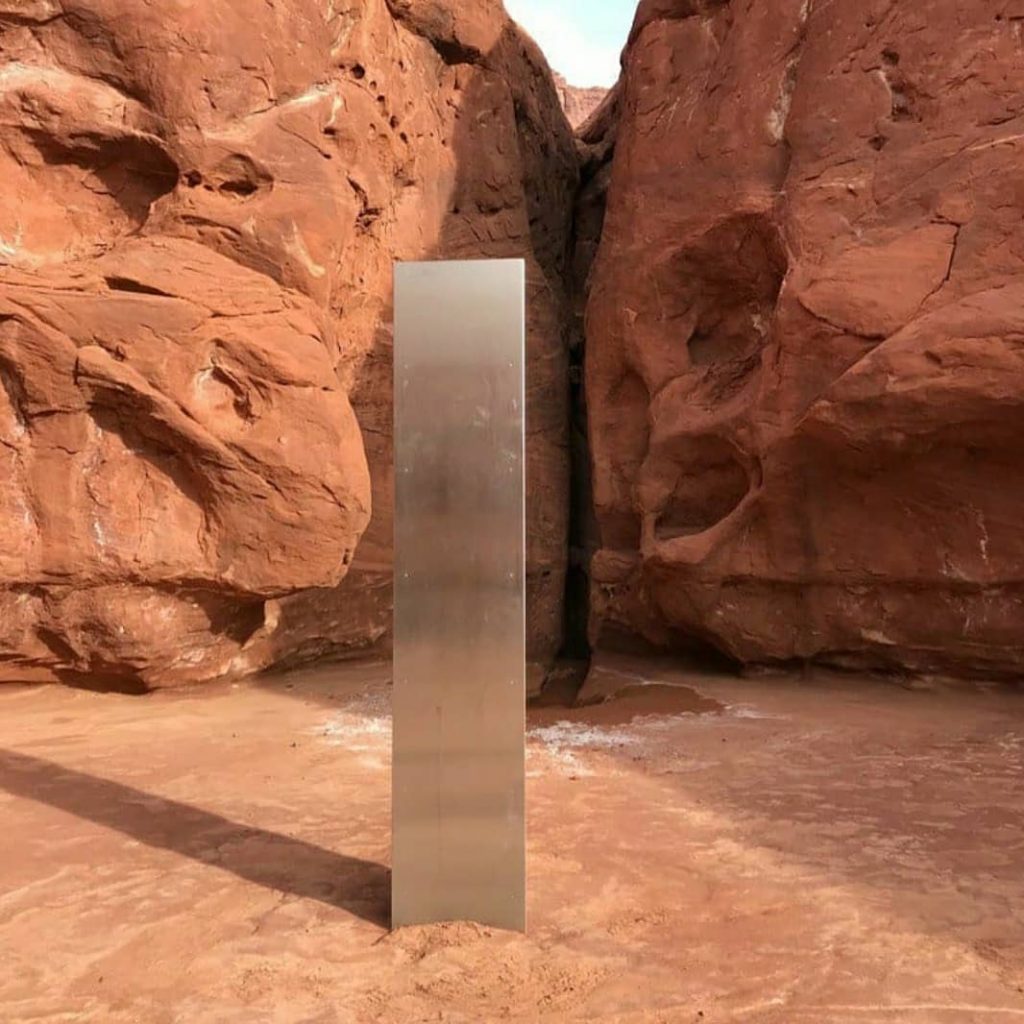Art World
A ‘UFO’-Like Steel Monolith Emerges in the Welsh Countryside
The structure recalls the monoliths that appeared around the world in 2020.

A new large triangular prism made of metal—dubbed a monolith—has been found in Wales, atop a hill known as Hay Bluff, sparking questions of its origin.
“So I’m on top of the bluff,” Craig Muir, the man who purportedly found the monolith, said in a video he posted to social media. “I’ve never seen this before. It almost looks like a UFO.”
Muir shared his alleged discovery in a Facebook group for residents in Hay-on-Wye, the community where he lives near where the monolith was found.
“Stoopid, ugly art projects spoiling the landscape so greedy council bodies can apply for more money to waste from the government before the end of the tax year,” one resident posted in the group. “Yuk!”

Craig Muir and the monolith he found on Hay Bluff in Wales. Photo: Craig Muir
Muir, a stone mason and familiar with metal fabrication, said in an interview that people are suggesting he created the monolith.
“But then, they are also suggesting it was aliens. I’ll just let people assume what they want,” he said. “I’m not claiming have made it, I just happened to find it as I go up there everyday sometime twice as a form of exercise and to walk the dogs. I think who ever did it was quite skilled. If I had to guess I would say it would cost between 100 and 200 quid as its no more than one large sheet of steel.”
When interviewed by The New York Times, Muir may have further revealed himself, stating: “It must be some sort of art installation … If you didn’t know anything, to look at it, you could have easily thought it had been dropped off by a UFO or something.”
Muir described the monolith as about 10 feet tall and about a foot-and-a-half wide. He said it was likely made of steel rather than aluminum because “it had too much shine to it,” he told the Times.
“I’d say it was like a surgical steel because obviously whoever’s done it doesn’t want it to rust,” Muir said. He also described it as having “very, very smooth, very shiny, very crisp edges.”

The steel monolith discovered in southern Utah. Courtesy of the Utah Department of Public Safety.
During the early days of 2020, similar monoliths began appearing everywhere from the desert in Utah to as far as Romania and Turkey. Some, like a collective led by Los Angeles-based artist Matty Monahan—who goes by the name Matty Mo—seemingly later took credit for the monolith in Utah while designer Tom Dunford took credit for one on the Isle of Wight.
When asked if he was behind the monolith in Wales, Mo responded: “Not no.” He then fessed up that he was never behind any of the monoliths but was able to take credit for the Utah one as a sort-of performance art piece commenting about the state of the media. He shared an affidavit he had filed with the U.S. Bureau of Land Management admitting he was not behind the work.
“At no time does the agency plan to release your identity or any lack of involvement with the placement of the Utah Monolith,” a BLM special agent wrote to Mo at the time, essentially going along with the performance art piece. “I’m bound by policy and law to protect your identity.”
(Mo previously revealed he was not actually behind the monoliths in an interview three years ago with Heidi Zuckerman, though articles associating him with the monoliths continued to abound.)
Muir later pasted another video on social media. In it, he said people were asking him why he didn’t touch the monolith. He then cheekily goes up and touches it, editing the video to disappear as if beamed up by an alien spacecraft.





